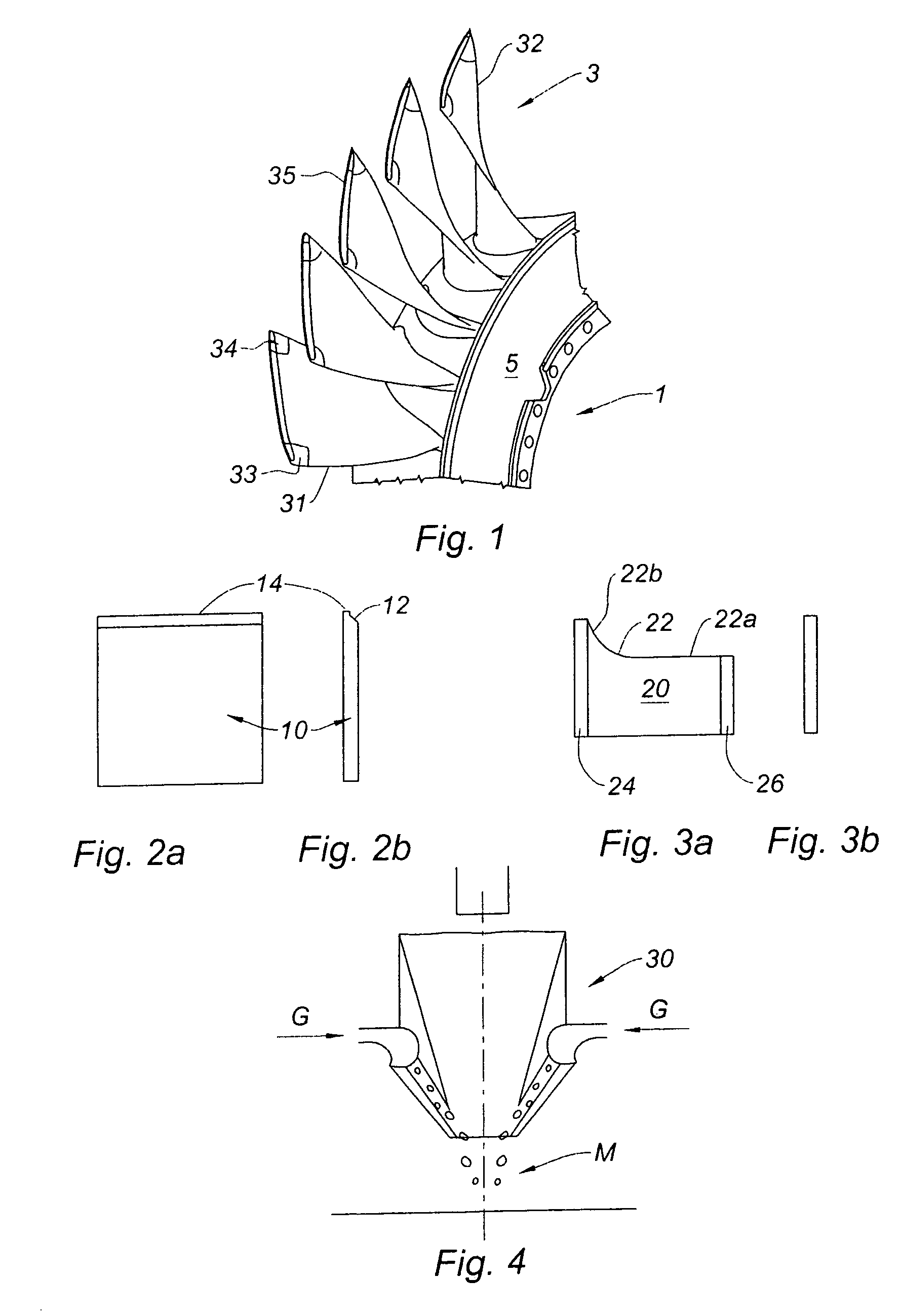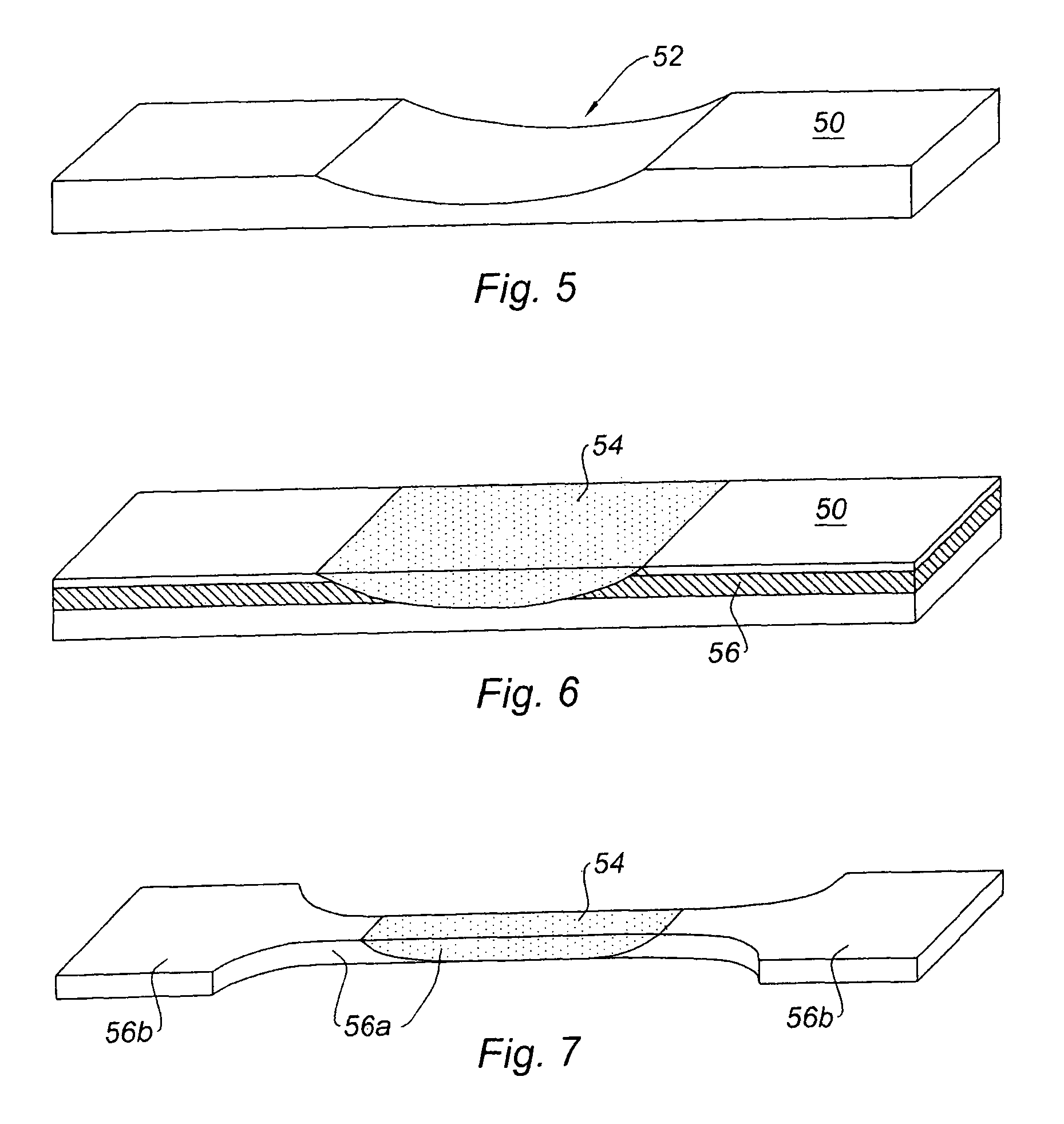Method of repairing a blisk and test pieces by welding
a technology of blisk and test piece, applied in the field of turbomachines, can solve the problems of compressor blade damage, wear or damage, difficulty in repair of rotor types, etc., and achieve the effect of great reliability
- Summary
- Abstract
- Description
- Claims
- Application Information
AI Technical Summary
Benefits of technology
Problems solved by technology
Method used
Image
Examples
Embodiment Construction
[0037]FIG. 1 shows part of a one-piece bladed disc 1. The blades 3 are radial and distributed around the periphery of a disc 5. The assembly is a one-piece assembly in the sense that it is manufactured either by machining from a single blank or by welding at least part of its components. The blades in particular are not joined to the disc by disconnectable mechanical means. The zones liable to be damaged are the leading edges 31, the trailing edges 32, the leading edge corners 33, the trailing edge corners 34 and the line of the aerofoil tip 35 provided with a thinned portion forming a sealing lip as is known.
[0038]The damage observed depends on the position of the zone. On the leading edge, IS trailing edge or aerofoil corner for example, this may be a loss of material caused by the impact of a foreign body or else a crack. At the aerofoil tip, this is more often wear due to rubbing with the engine casing. For economic and industrial reasons, it is desirable to standardize the oper...
PUM
| Property | Measurement | Unit |
|---|---|---|
| Speed | aaaaa | aaaaa |
Abstract
Description
Claims
Application Information
 Login to View More
Login to View More - Generate Ideas
- Intellectual Property
- Life Sciences
- Materials
- Tech Scout
- Unparalleled Data Quality
- Higher Quality Content
- 60% Fewer Hallucinations
Browse by: Latest US Patents, China's latest patents, Technical Efficacy Thesaurus, Application Domain, Technology Topic, Popular Technical Reports.
© 2025 PatSnap. All rights reserved.Legal|Privacy policy|Modern Slavery Act Transparency Statement|Sitemap|About US| Contact US: help@patsnap.com



